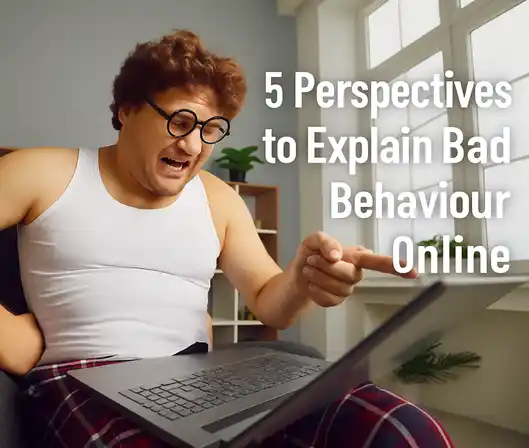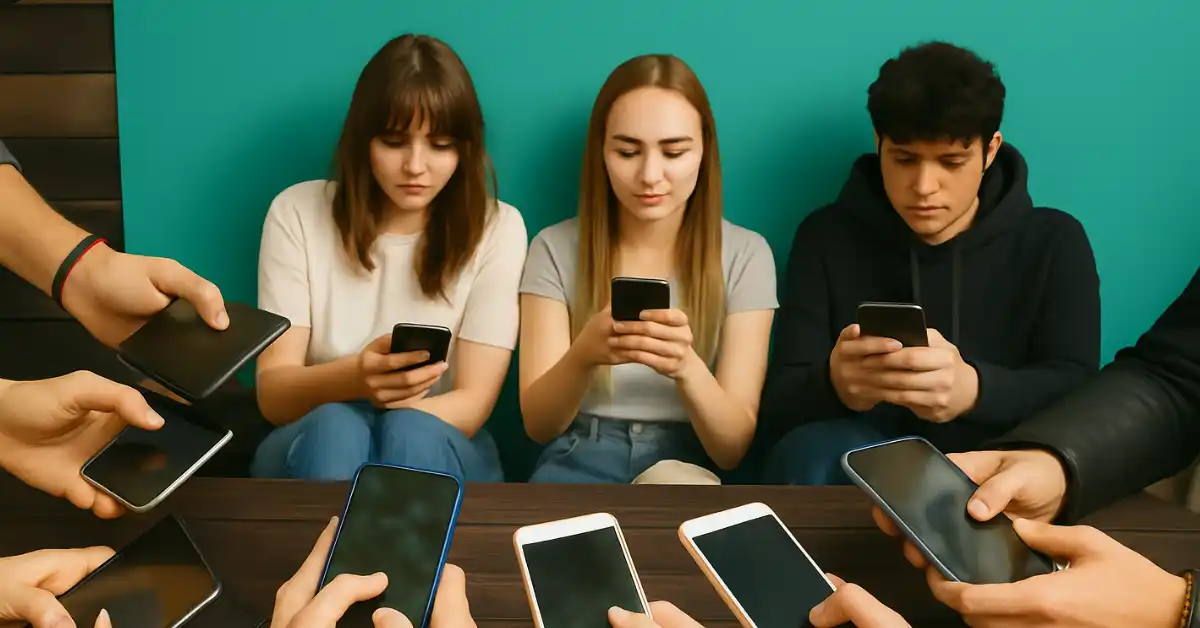

5 Perspectives to Explain Bad Behaviour Online

In our increasingly digital lives, the way we communicate online matters — not just for the moment, but for the world we build together. Every comment, share, emoji or post carries emotional weight, even if the screen can make us forget it. When online interactions become dismissive, hostile or careless, we’re witnessing a phenomenon we might call digital disrespect. This isn’t simply “bad manners on the internet”; it’s a signpost of deeper cultural, psychological and social currents. In this article, we will explore five perspectives that help unpack why it happens and what we might do about it.
1. Social Reflection
The internet is not a separate realm immune from society — it mirrors us. When online discourse becomes polarised, impatient or dismissive, it often reflects real‐world cultural trends: increasing social fragmentation, echo chambers, and a weakening of shared norms of civility.
For example, one study of online aggression during times of political turmoil found that hostile language on Facebook and Twitter acted as part of a broader challenge to civil discourse, contributing to delegitimisation of the political actors and erosion of social glue.
In other words, digital disrespect is not just about individuals behaving badly online — it is symptomatic of a wider decline in the shared sense of dialogue.
When we think of reclaiming respect online, it isn’t about being superficially ‘nice’. It’s about re-building the social glue: the trust, norms and shared understanding that allow communities (online and offline) to function well.
As users of digital spaces, we become co‐creators of the ambience. If we allow dismissiveness, flippancy or hostility to become the norm, we erode our own capacity for respectful interaction in the “real world” too.
When faced with hostility online, a reflex might be to retaliate. But research suggests a different approach: responding with compassion (not complacency) can shift the tone. It’s not about tolerating abuse, but remembering that behind the screen is a real person with unmet needs.
For example: a user who lashes out may be acting from a place of loneliness, cultural alienation or fear rather than pure malice. Responding with curiosity (“I ask this because I’d like to understand”) instead of quick dismissal invites connection. In this way, our online interactions can become opportunities to restore agency, rather than simply escalating conflict.
When digital respect becomes a default, it signals that our shared humanity matters — even (or especially!) when we disagree.
3. Online Disinhibition

One of the most notable psychological lenses on digital disrespect is the so-called online disinhibition effect. This describes the way anonymity in online spaces reduce our inhibitions and can lead to behaviour we might never show face-to-face.
Dr John Suler has identified the following factors for online disinhibition:
- dissociative anonymity, (people have the opportunity to separate their actions on-line from their in-person lifestyle and identity)
- invisibility, (simply, people cannot see one another online)
- asynchronicity, (people don’t interact with each other in real time, and therefore people’s train of thought may progress more steadily and quickly towards deeper expressions of benign and toxic disinhibition that avert social norms.)
- solipsistic introjection, (Absent face-to-face cues combined with text communication can alter self-boundaries.)
- dissociative imagination, (people may feel that the imaginary characters they “created” exist in a different space, that one’s online persona along with the online others live in a make-believe dimension,)
- and minimization of status and authority (In many environments on the Internet, everyone has an equal opportunity to voice him or herself.)Suler writes: “Rather than thinking of disinhibition as the revealing of an underlying “true self,” we can conceptualize it as a shift to a constellation within self-structure, involving clusters of affect and cognition that differ from the in-person constellation.”As well, specific personality traits (for example manipulativeness, sadism or psychopathy) have been linked to trolling behaviours. So the combination of the environment (online anonymity) + personal factors = a potent risk for disrespectful behaviour.Understanding this helps: it suggests that cultivating presence, even in digital form, matters. A short pause before posting, acknowledging that the other person is real, makes a difference.
4. The Addiction of Disrespect
It may be surprising to think of disrespectful online behaviour as addictive — but there is compelling psychological insight here. Some users derive a kind of “rush” from negative engagements: outrage posts, trolling, flame wars. The reward may come in visibility (likes, retweets), emotional arousal (anger), or dominance (silencing others).
One study found that mindfulness (i.e., self-awareness, emotional regulation) was negatively associated with online trolling, mediated by social media fatigue and moderated by moral disengagement. In other words: “individuals with high mindfulness were less likely to troll others online”. However, if they morally disengage (“That’s just how it is online”), then the brake doesn’t work.
Another study with adult participants found that psychological distress predicted cyberbullying/perpetration only at medium/high levels of toxic disinhibition (i.e., when online restraints were lowered).
5. Group Divides
Respect is culturally mediated. What one group sees as honest and direct, another may interpret as rude or abrasive. In our globalised digital world, generational divides and intercultural differences fuel misunderstandings and inadvertent disrespect.
For example:
- Older generations might expect formal address, slower pace, customised pleasantries.
Compared to - Younger generations who might favour brevity, irony, memes, emoji-driven communication.

Conflict online is not just caused by younger generations either. A study from Belgium found that even 66-year-olds engage in online aggression (and also become victims). “Perpetrators and victims of online aggression can be found in all age groups,” says Dr. Sara Pabian.
These conflicts and divides aren’t just generational. Some cultures place high value on indirectness and ‘saving face’; others prize frankness.
Misalignment here can lead to conflict: a quick ironic jab may feel disrespectful to someone who expects measured language.
What can help? A mindset of cultural curiosity and humility. When communicating online, consider: “Is my tone unhelpful? Could this be interpreted differently by someone from another culture or age group?” This small shift can reduce friction and build bridges rather than divisions.
Conclusion: The Ripple Effect

Digital disrespect doesn’t stay online. The tone we use in our digital conversations seeps into our face-to-face relationships, shapes how we interpret others’ intentions, and influences how we express our emotions.
Over time, constant exposure to dismissive, combative or hostile online exchanges can normalise a lack of empathy. It becomes easier to treat people as avatars rather than individuals.
At Positive Mind Works we offer a wide range of support. Maybe you’d like to better manage your online interactions, strengthen social connections, or need help facing online disrespect; whatever the need we’re here, both online and in-person.
FAQs:
What does “digital disrespect” mean?
Digital disrespect refers to rude, dismissive, or hostile behaviour in online spaces — from sarcastic comments and trolling to personal attacks or public shaming. It includes any form of communication that disregards others’ dignity or emotions in digital interactions.
Why do people behave more aggressively online than in person?
There can be many different reasons, such as the sense of anonymity, invisibility, and distance online, which can lower empathy and reduce self-control. Without the usual social cues — like eye contact or tone — people can act in ways they wouldn’t face-to-face.
Is digital disrespect harmful to mental health?
Yes. Exposure to constant negativity or hostility online can increase stress, anxiety, and feelings of isolation. Studies have shown that online aggression can erode trust and empathy, affecting both the person targeted and the broader online community.
How can I respond to online disrespect without escalating conflict?
Pause before reacting. A calm, respectful reply — or no reply at all — can prevent escalation. Using phrases such as “I see your point” or “Let’s focus on the issue” helps steer conversation back to substance. In cases of repeated abuse, it’s okay to mute, block, or report the behaviour.
How can we promote digital respect as individuals and communities?
Start small: pause before posting, assume positive intent, and model empathy in your replies. Communities can also set clear guidelines, moderate respectfully, and celebrate constructive dialogue. Digital respect is contagious — when one person raises the tone, others often follow.

